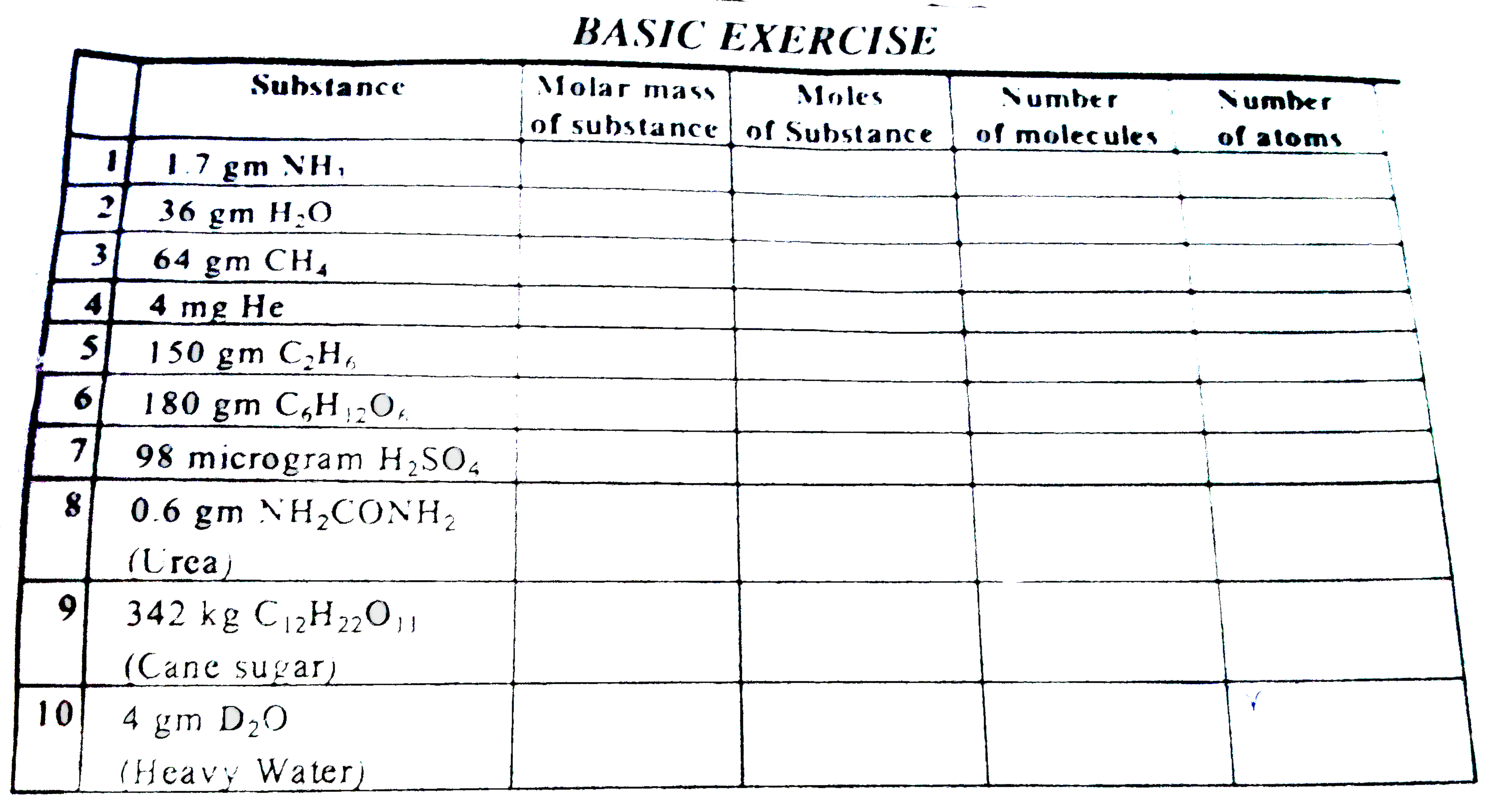12 moles of each A and B are allowed to react as given : 3A+2B⇒C+12D. If 60g of D is produced then calculate the atomic mass of D.
30
45
60
15
To solve the problem step by step, we will follow the given reaction and the information provided.
Step 1: Identify the reaction and the stoichiometry
The reaction given is:
3A+2B→C+12D
From the stoichiometry of the reaction:
- 3 moles of A produce 12 mole of D.
Step 2: Determine the limiting reagent
We are given that 12 moles of A and 12 moles of B are available for the reaction.
- According to the reaction, to fully react 12 moles of A, we need:
Moles of B required=23×12=8 moles of B
Since we have 12 moles of B available, B is in excess, and A is the limiting reagent.
Step 3: Calculate the moles of D produced
Using the stoichiometry from the reaction:
- 3 moles of A produce 12 mole of D.
- Therefore, 1 mole of A produces 16 mole of D.
For 12 moles of A:
Moles of D produced=12×16=2 moles of D
Step 4: Use the mass of D to find the atomic mass
We know that the mass of D produced is 60 g. We can use the formula:
Moles=MassMolar Mass
Rearranging gives us:
Molar Mass=MassMoles
Substituting the values we have:
Molar Mass of D=60 g2 moles=30 g/mol
Final Answer
The atomic mass of D is 30 g/mol.
---
The reaction given is:
3A+2B→C+12D
- 3 moles of A produce 12 mole of D.
We are given that 12 moles of A and 12 moles of B are available for the reaction.
Moles of B required=23×12=8 moles of B
Since we have 12 moles of B available, B is in excess, and A is the limiting reagent.
Using the stoichiometry from the reaction:
- 3 moles of A produce 12 mole of D.
- Therefore, 1 mole of A produces 16 mole of D.
Moles of D produced=12×16=2 moles of D
We know that the mass of D produced is 60 g. We can use the formula:
Moles=MassMolar Mass
Rearranging gives us:
Molar Mass=MassMoles
Molar Mass of D=60 g2 moles=30 g/mol
The atomic mass of D is 30 g/mol.
Topper's Solved these Questions
- RACEBOOK - ALLENCHAPTER - RACEEXERCISE - Multiple correct
19 Videos
- RACEBOOK - ALLENCHAPTER - RACEEXERCISE - Subjective
13 Videos
- Periodic Table BOOK - ALLENCHAPTER - Periodic Table EXERCISE - All Questions
40 Videos
- REACTION MECHANISM (PART-I)BOOK - ALLENCHAPTER - REACTION MECHANISM (PART-I)EXERCISE - MCQ
21 Videos
Similar Questions
1.1 mole of A and 2.2 moles of B reach an cquilibrium in I lit container according to the reaction. A+2B⇔2C + D. If at equilibrium 0.1 mole of D is present, the equilibrium constant is:
View Solution9 moles of "D" and 14 moles of E are allowed to react in a closed vessel according to given reactions. Calculate number of moles of B formed in the end of reaction, if 4 moles of G are present in reaction vessel. (percentage yield of reaction is mentioned in the reaction) Step -1 3D+4E80%→5C+A Step-2 3C+5G50%→6B+F
View Solution
Knowledge Check
In the reaction A+B⇔C+D, 4 moles of A
react with 4 moles of B and form 2 moles each of C and D. The value of Ke for the reaction isA2B3C1D1.56
9 moles of "D" and 14 moles of E are allowed to react in a closed vessel according to given reactions. Calculate number of moles of B formed in the end of reaction, if 4 moles of G are present in reaction vessel. (percentage yield of reaction is mentioned in the reaction) Step -1 3D+4E80%→5C+A Step-2 3C+5G50%→6B+F
View Solution
A→2B+C
3B→2D
Find moles of D produced if initially 3 moles of A are taken.
View Solution3 moles of A and 4 moles of B are mixed together and allowed to come into equilibrium according to the following reaction.
3A(g)+4B(g)→2C(g)+3D(g)
When equilibrium is reached, there is 1 mole of C. The equilibrium constant of the reaction is
View SolutionTwo moles of each reactant A and B are taken in a reaction flask. They react in the following manner,
A(g)+B(g)⇔C(g)+D(g)
At equilibrium, it was found that the concentration of C is triple to that of B the equilibrium constant for the reaction is
View SolutionThe Kc for given reaction will be A2(g)+2B(g)⇔C(g)+2D(s)
View SolutionFor the reaction A(s)+2B(g)→3C(g)+D(g)
Molar mass [gmol−1]A=100,B=50,C=60,D=20
(a) How many grams of C are produced by reaction of 250gA ? [Hint : Mass relation]
(b) What mass of B reacts to give 500gD
(c) How many grams of A will produce 11.2L of C at STP ? .
View SolutionIf →a,→b are the position vectors of A,B respectively, find the position vector of a point C in AB produced such that AC=3AB and that a point D in BA produced such that BD=2BA .
View Solution
